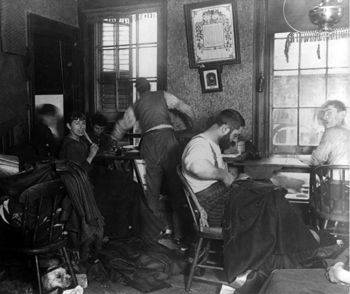- Home
- News
- Features
- Topics
- Labor
- Management
- Opinions/Blogs
- Tools & Resources
Minimum Wage Laws: A Brief History
Minimum wage laws prohibit employers from hiring employees or workers for less than a given hourly, daily or monthly minimum wage.
More than 90% of all countries have some kind of minimum wage legislation.
Although minimum wage laws are in effect in many jurisdictions, differences of opinion exist about the benefits and drawbacks of a minimum wage.
Supporters of the minimum wage say they increases the standard of living of workers, reduce poverty, reduce inequality, boost morale and force businesses to be more efficient.
Opponents say that if it is high enough to be effective, it increases unemployment, particularly among workers with very low productivity due to inexperience or handicap, thereby harming less skilled workers and possibly excluding some groups from the labor market; additionally it may be less effective and more damaging to businesses than other methods of reducing poverty.
The first minimum wage law was enacted in 1896 in Victoria, Australia.
An amendment to Victoria’s Factories Act created a wages board. The wages board did not set a universal minimum wage. Instead it set basic wages for six low-paying industries.
First enacted as a four-year experiment, the wages board was renewed in 1900 and made permanent in 1904 when it covered 150 different industries.
By 1902, other Australian states, such as New South Wales and Western Australia, had also formed wages boards.
Also in 1896, New Zealand enacted the first national minimum wage laws. Unlike the wages board of Victoria, were enforced by compulsory arbitration.In 1907 the British government sent Ernest Aves to investigate the Australia and New Zealand’s minimum wage laws.
Churchill Brings Minimum Wage Laws To England
Winston Churchill, then president of England’s Board of Trade, introduced the Trade Boards Act on March 24, 1909, partly due to Aves’ report. The Trade Boards Act became law, and went into effect in January 1910.
Minimum wage laws were proposed in part to control the proliferation of sweatshops in manufacturing industries.
The sweatshops employed large numbers of women and young workers, paying them very low wages.
The sweatshop owners were viewed as having unfair bargaining power over their workers. A minimum wage was proposed as a means to make sweatshop employers pay “fairly.”
Eventually the focus of minimum wage laws shifted to helping people, especially families, become more self-sufficient.
Today, minimum wage laws affect workers in most low-paid fields of employment.
Until recently, minimum wage laws were usually very tightly focused.
Prior to the Great Depression in the U.S. and Great Britain, for example, minimum wage laws applied only to women and children.
Only after the Great Depression did many industrialized economies extend minimum wage law protection to the entire workforce.
Even then, the laws were often specific to certain industries. In France, for example, minimum wage laws were extensions of existing trade union legislation.
In the U.S., industry specific wage restrictions were ruled unconstitutional.
In the United States Fair Labor Standards Act of 1938 established a uniform national minimum wage for nonfarm, nonsupervisory workers.
Minimum wage law coverage was later extended to most of the labor force.
The first moves to legislate wages did not set minimum wages. Instead the laws created arbitration boards and councils to resolve labor conflicts before resorting to strikes.
- In 1896, New Zealand established arbitration boards with the Industrial Conciliation and Arbitration Act
- In 1896, the colony of Victoria, Australia established similar boards
- In 1907, the Harvester decision was handed down in Australia. It established a ‘living wage’ for a man, his wife and two children to “live in frugal comfort.”
- In 1909, the Trade Boards Act was enacted in the United Kingdom, establishing four such boards
- In 1912, the state of Massachusetts, United States, set minimum wages for women and children.
- In the United States, statutory minimum wages were first introduced nationally in 1938.
- In the 1960s, minimum wage laws were introduced in Latin America as part of the Alliance for Progress. However these minimum wages were, and are, low.
Workers in a sweatshop in Ludlow Street Tenement, New York City, 1894. Photo: Lbrary of Congress
List your business in the premium web directory for free This website is listed under Human Resources Directory





